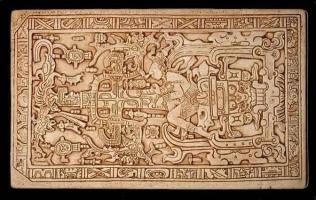Copy Link
Add to Bookmark
Report
dictyNews Volume 32 Number 05

dictyNews
Electronic Edition
Volume 32, number 5
February 20, 2009
Please submit abstracts of your papers as soon as they have been
accepted for publication by sending them to dicty@northwestern.edu
or by using the form at
http://dictybase.org/db/cgi-bin/dictyBase/abstract_submit.
Back issues of dictyNews, the Dicty Reference database and other
useful information is available at dictyBase - http://dictybase.org.
=========
Abstracts
=========
Review: A Novel Function of Ethylene
Aiko Amagai
Department of Biomolecular Science, Graduate School of Life Sciences,
Tohoku University, Katahira 2-1-1, Aoba-Ku, Sendai 980-8577, Japan
Gene Regulation and Systems Biology, in press
The cellular slime mold, Dictyostelium mucoroides-7 (Dm7) exhibits clear
dimorphism; macrocyst formation as a sexual process and sorocap formation
as an asexual process. These two life cycles are regulated by two regulators,
ethylene and cyclic AMP (cAMP). This is the first report demonstrating a
novel function of ethylene at the cellular level. That is, ethylene induces
a zygote formed by cell fusion and subsequent nuclear fusion. Recently, the
function of ethylene at the molecular level has been clarified as it induces
zygote formation through an enhanced expression of a novel gene, zyg1.
The signaling pathway for induction or inhibition of zygote formation is
now trying to be clarified focusing on the ZYG1 protein.
Submitted by: Aiko Amagai [aiamagai@mail.tains.tohoku.ac.jp]
--------------------------------------------------------------------------------
Regulation of Dictyostelium morphogenesis by RapGAP3
Taeck J. Jeon, Susan Lee, Gerald Weeks, Richard A. Firtel
Developmental Biology, in press
Rap1 is a key regulator of cell adhesion and cell motility in Dictyostelium.
Here, we identify a Rap1-specific GAP protein (RapGAP3) and provide
evidence that Rap1 signaling regulates cell-cell adhesion and cell migration
within the multicellular organism. RapGAP3 mediates the deactivation of Rap1
at the late mound stage of development and plays an important role in regulating
cell sorting during apical tip formation, when the anterior-posterior axis of the
organism is formed, by controlling cell-cell adhesion and cell migration. The
loss of RapGAP3 results in a severely altered morphogenesis of the multicellular
organism at the late mound stage. Direct measurement of cell motility within
the mound shows that rapGAP3- cells have a reduced speed of movement and,
compared to wild-type cells, have a reduced motility towards the apex.
rapGAP3- cells exhibit some increased EDTA/EGTA sensitive cell-cell adhesion
at the late mound stage. RapGAP3 transiently and rapidly translocates to
the cell cortex in response to chemoattractant stimulation, which is dependent
on F-actin polymerization. We suggest that the altered morphogenesis and the
cell-sorting defect of rapGAP3- cells may result a reduced directional movement
of the mutant cells to the apex of the mound.
Submitted by: Rick Firtel [rafirtel@ucsd.edu]
--------------------------------------------------------------------------------
Targeting the actin-binding protein VASP to late endosomes induces the formation
of giant actin aggregates
Christian Schmauch, Susan Claussner, Hellmuth Zoeltzer, and Markus Maniak
Abteilung Zellbiologie und CINSaT, Universitaet Kassel, Heinrich-Plett-Str. 40,
34132 Kassel, Germany
Eur. J. Cell Biol., in press
In vitro, the vasodilator-stimulated phosphoprotein (VASP) acts as a regulator
of actin filament assembly in many ways. In cells it localizes to sites where
actin is rapidly polymerized such as filopodia, lamellipodia, and focal adhesions.
We have mistargeted VASP to the surface of the late endosome in Dictyostelium
cells thereby inducing the formation of a dense actin aggregate which sequesters
various actin-binding proteins and endosomal components. Depletion of these
proteins from the cytoplasm leads to phenotypes mimicking the corresponding
knockout cells. Some properties of the actin aggregate are reminiscent of Hirano
bodies that are often observed in nerve tissue from patients suffering from
neurodegenerative diseases, opening the possibility that protein sequestration
contributes to neuronal malfunction.
Submitted by: Markus Maniak [maiak@uni-kassel.de]
==============================================================
[End dictyNews, volume 32, number 5]


















